A life changing spinal injury is one of those things that we really hope never happens to us – but as mountain bikers we know it’s a risk. When it happens, as well as all the obvious and potentially major health, work and accessibility implications, it can also mean we lose the ability to socialise with our friends like we used to. What happens when you can’t ride with your ride buddies?
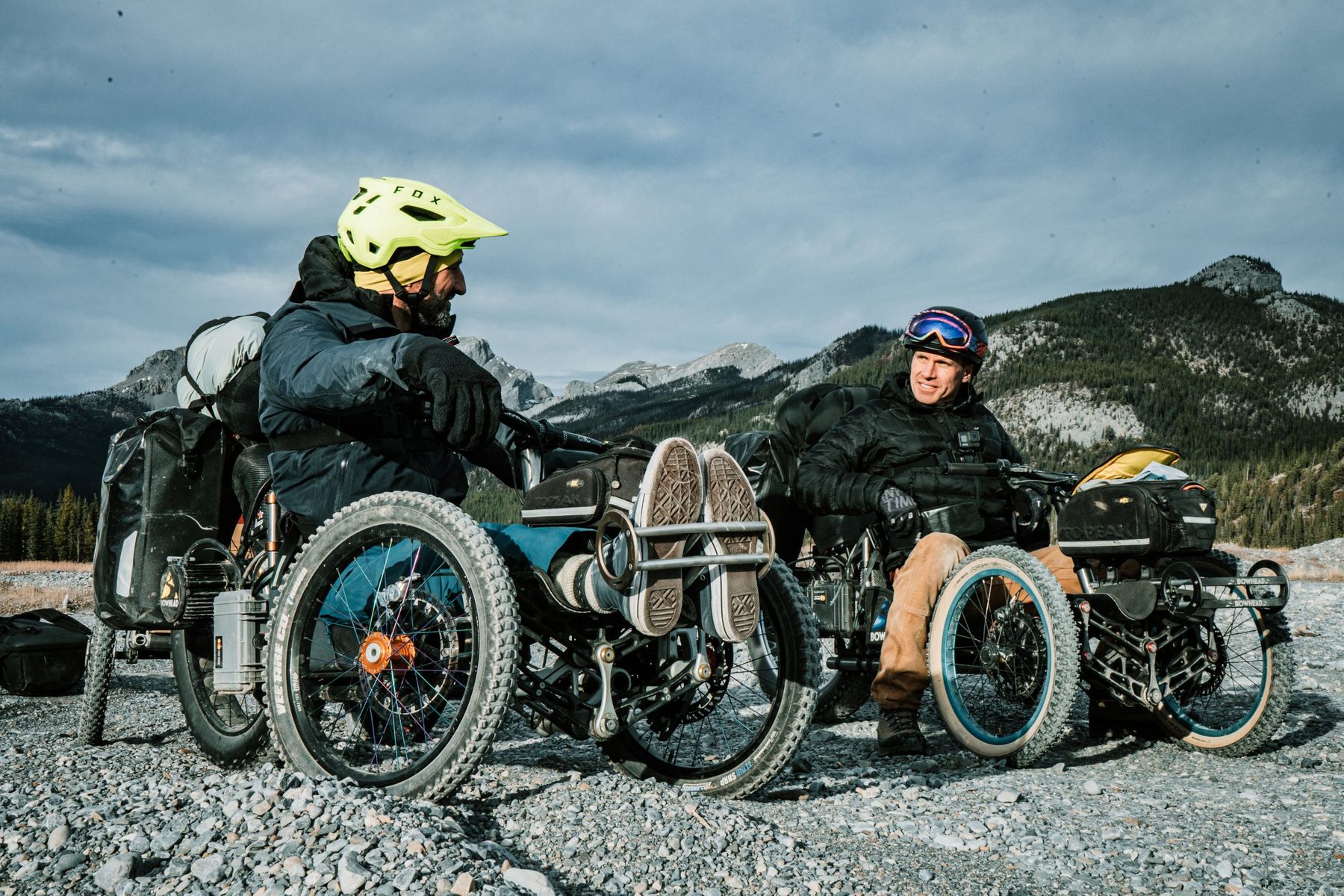
For Christian Bagg, the life changing injury came from snowboarding, not mountain biking. Thankfully, due to some incredible ingenuity, he’s managed to regain the ability to get out and ride his bike with friends. The tool that makes this possible is the Bowhead, and having realised that it wasn’t just him who could benefit from it, he’s turned this creation into a business. The bike might not look much like a normal mountain bike, but the reasons for riding and some of the technological challenges are just the same.
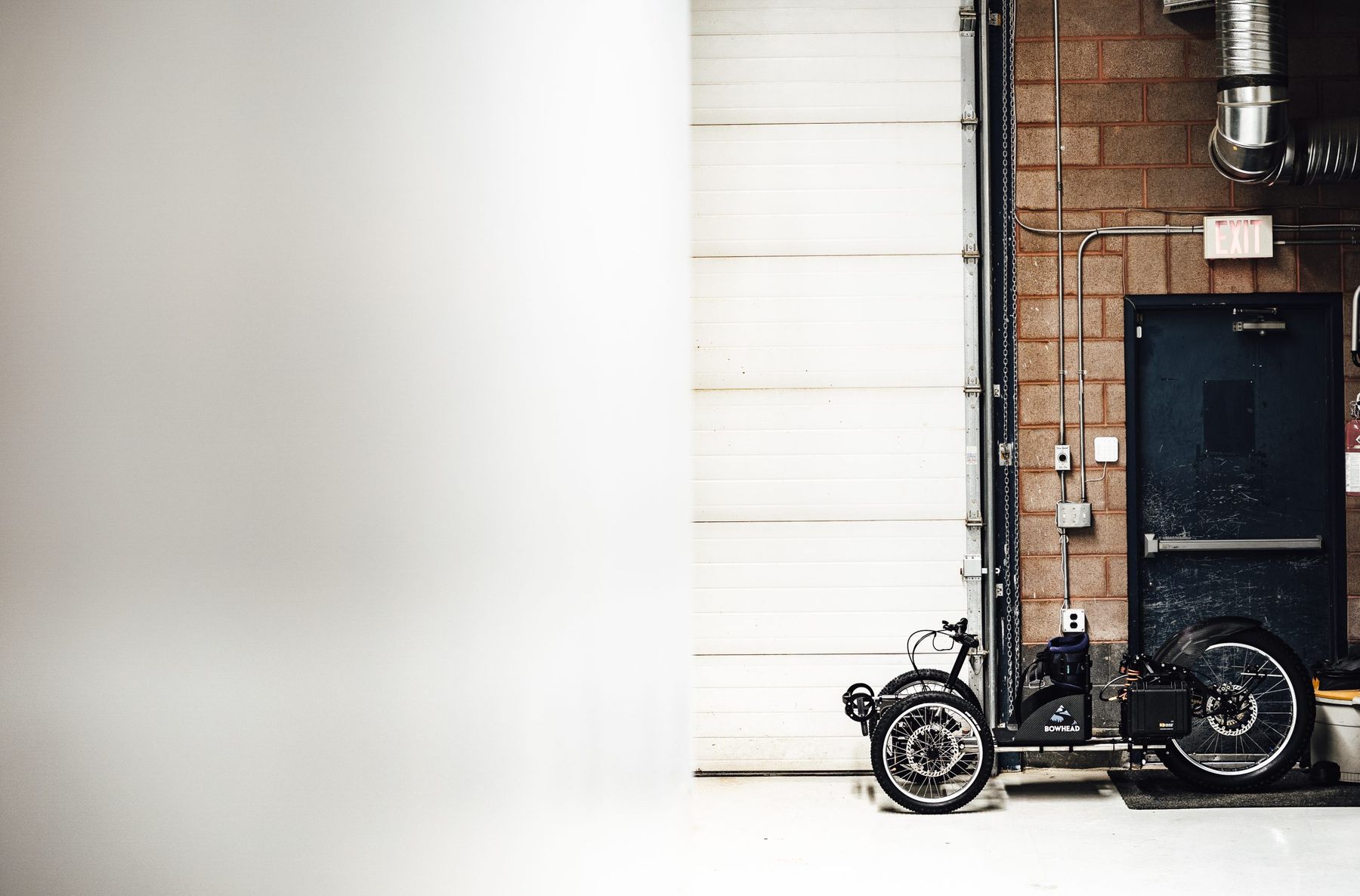
Sit down and listen to Christian talking about the bike’s development, its features, and the benefits it can bring, in this podcast.
Help us make our podcasts even better
We’ve a huge selection of images of the bike, so let’s take a closer look at the bike and some of the points we discuss in the podcast.
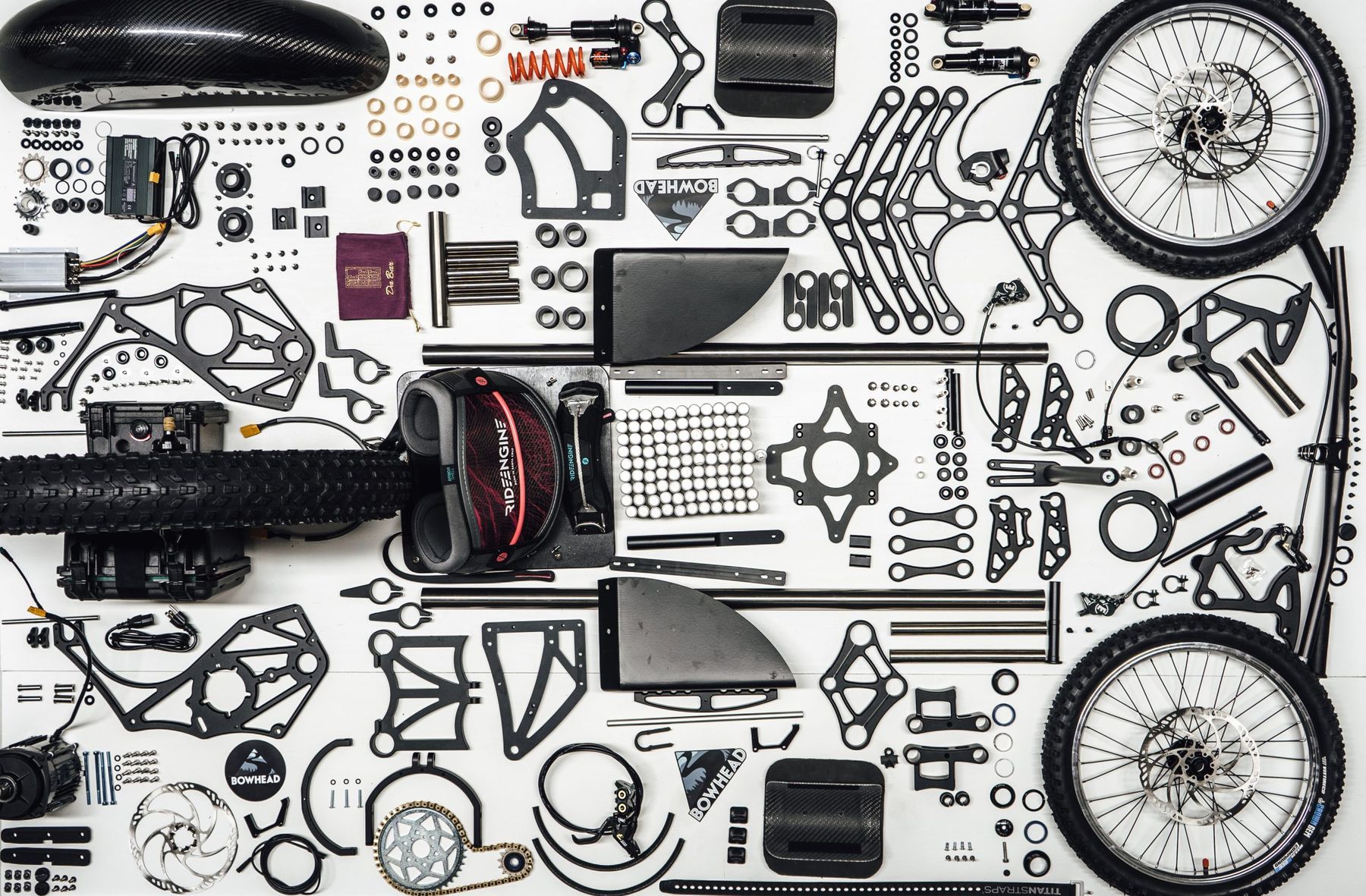
There are a lot of parts! The frame is made and assembled in Calgary, but wherever possible Christian uses readily available standard parts, so that there’s less chance of local maintenance difficulties or obsolescence. It also means there’s room to upgrade your shock etc, if you’ve still got the upgrade itch! And like many dream bikes, you can opt for a titanium frame too, for a lighter option.
The key piece of technology in this bike is the front parallelogram, which allows the bike to stay stable on off camber or rough trails – the wheels move independently of seat, so that the wheel goes over a rock without tipping a rider out. You can also lean into turns. If you check out other adaptive trikes and cycles, this tends not to be the case – and limits the options of where you can go.
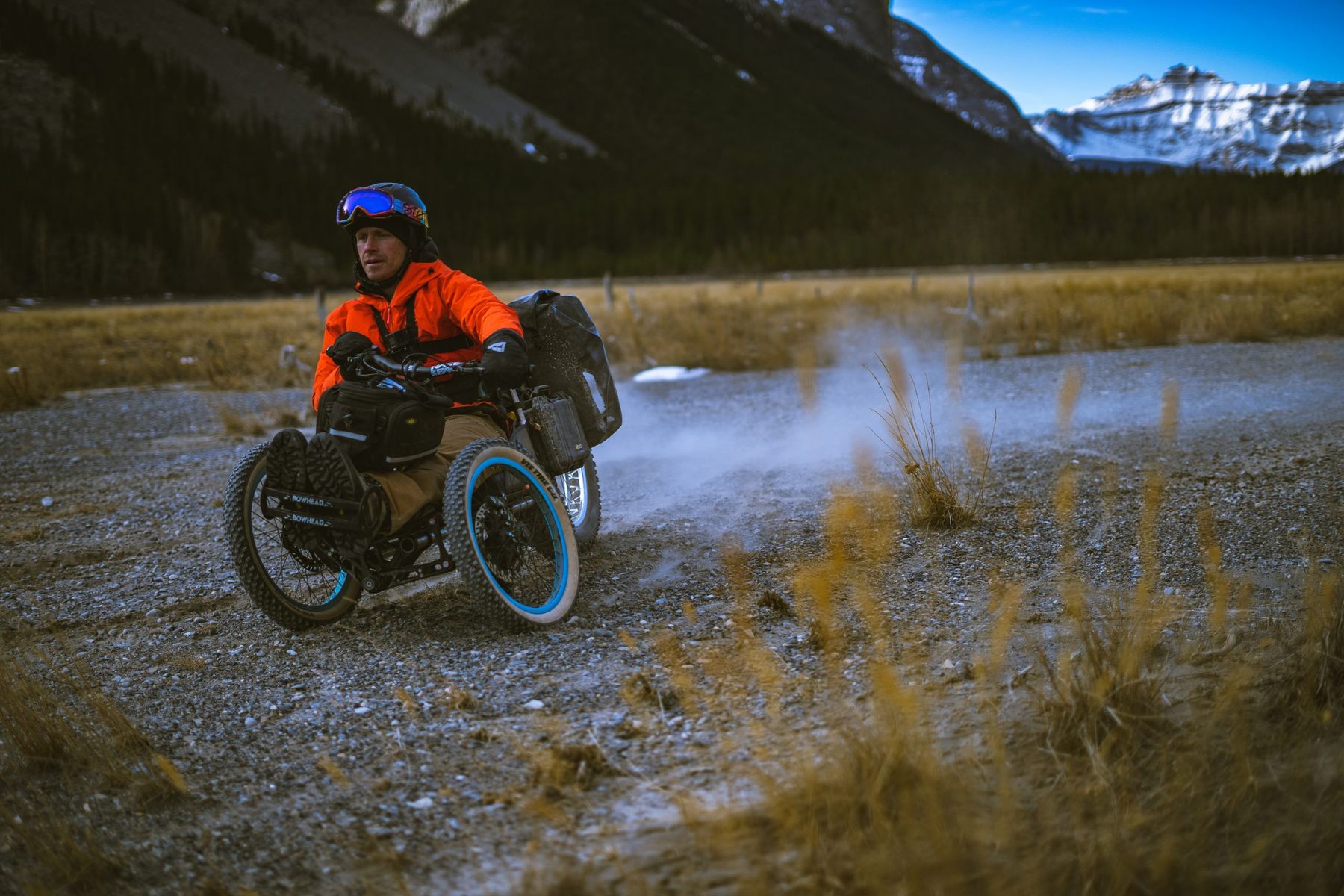
Something else which helps make this bike go further is the width. It’s no wider than your own mountain bike’s bars, meaning you can ride singletrack trails rather than needing wide and groomed bike park paths or doubletrack. Christian designed it not just to let him get out mountain biking, but also let him get out with his family on hikes – where trails tend to be narrow.
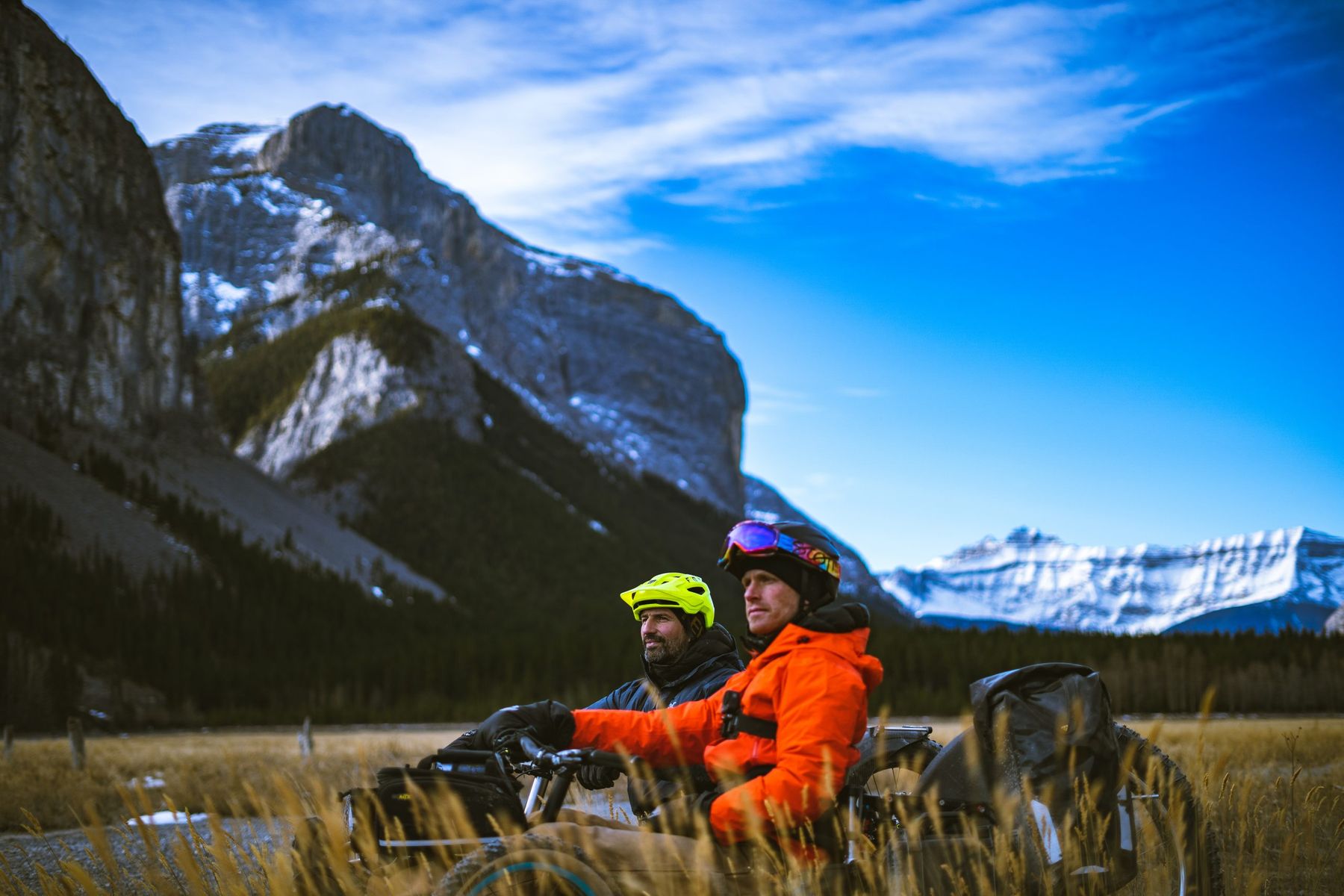
The upright ride position means you can look around and chat to your friends as you ride – whereas the forward position favoured by many trikes makes this more difficult. Christian also thinks that with the bike’s ability to lean, upright is actually the best position.
Riders sit in a seat, held in by a harness. These are sized to the rider. Another innovative feature about the Bowhead is that it can be ridden by riders of all different sizes – the basic chassis remains the same, with some options to adjust the length of the bike for smaller riders. If a growing rider like a teenager gets a bike, they just need a new seat and harness – not a whole new bike. Christian sees lots of riders using the bikes to go and ride with their children, often with small children on their lap – he’s developing an extra harness so you can strap your child in too. Another development on the way is a trailer and luggage, for bigger days out or bikepacking.
Heading out into the wild, or just on your own, means reliability is important. Christian has designed things to be a durable as possible – although trailside puncture fixes are an option. But he’s keen to point out that though this bike will take you way out there, it’s up to you to do that safely and responsibly, just as any other mountain biker has to think about whether they can get themselves out of what they’re getting into.
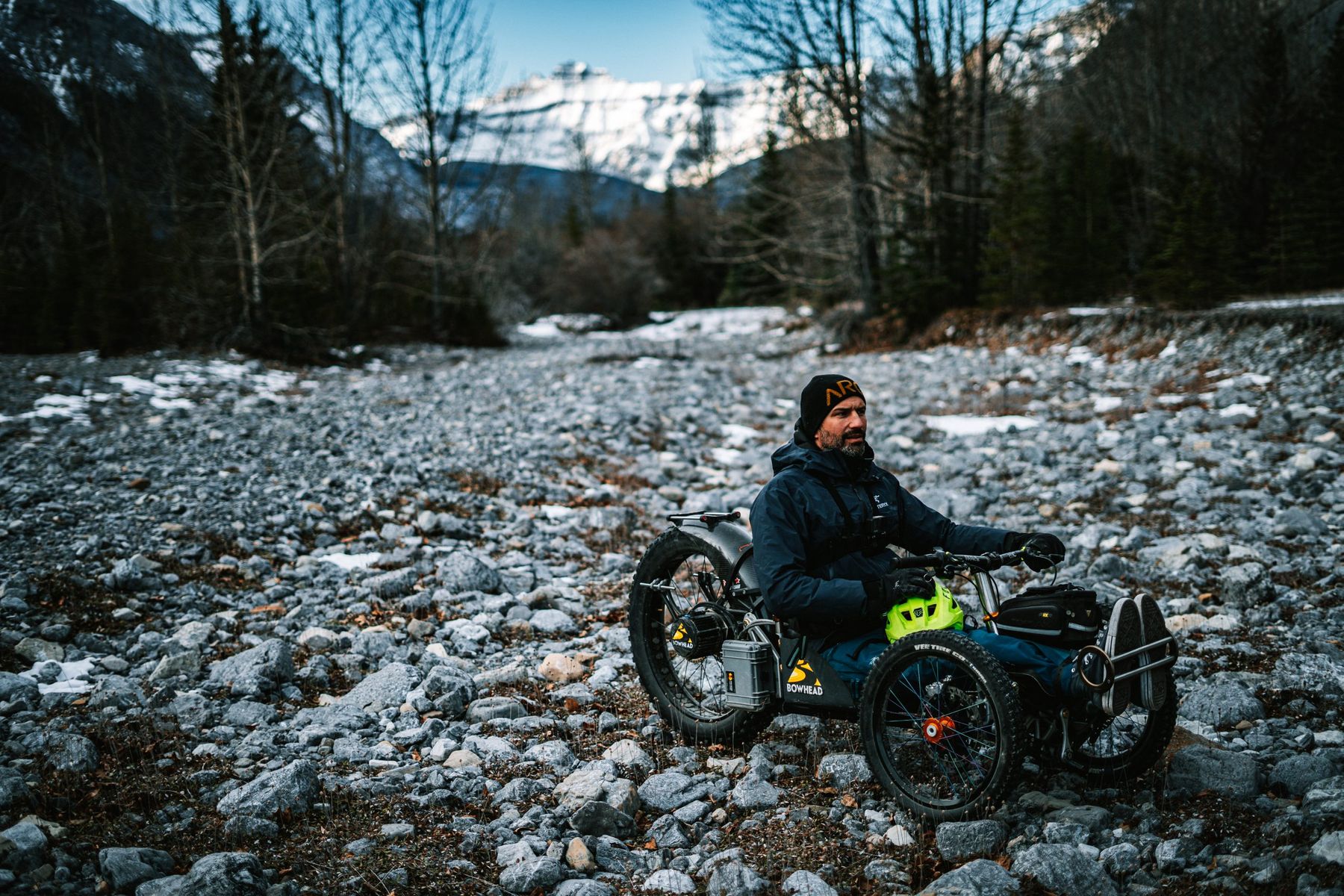
It was important to Christian to make the bike be able to be used as independently as possible, so it’s small enough and light enough that it can be loaded into a minivan or truck and driven to the trailhead by the rider.
There are different control options depending on the needs of the rider. They even make use of the one handed brake made by Hope – which Bowhead sometimes adapts further to make it operated by elbow! There are lots of people who can benefit from a Bowhead – not just those with a spinal injury – and Christian and the team have figured out various different control options to enable those with varying degrees of muscle strength to operate the bike – they’ve even managed a mouth controlled throttle.
There are three Bowhead options: a Bowhead Reach which is the ‘standard’ model with a throttle motor. The Bowhead AWD takes this up a notch to all wheel drive, making it able to tackle rougher terrain and loose traction scenarios like snow. Then there’s the Bowhead RX, which is coming soon and will be an e-assist bike with handcranks – making use of the latest ebike technology for those who want more of a workout, or the reassurance of a pedal back up.
Christian has already been off on a bikepacking expedition with the Bowheads, and has plans for lots more adventures. He’s been pleased to see all the different ways in which the bikes are being used – from being jumped at bike parks to helping someone taking their dog for a walk.
As riders show Christian ever more opportunities for the bike, and technology keeps moving on, so further opportunities to improve the Bowhead and its capabilities present themselves. The company has grown rapidly at its Calgary base, so let’s hope we can see these bikes continuing to improve the opportunities for more people to get out and experience the ride.
In the UK, they’re available through Cyclone Mobility, who have a test bike so you can check the bike is suitable for you.





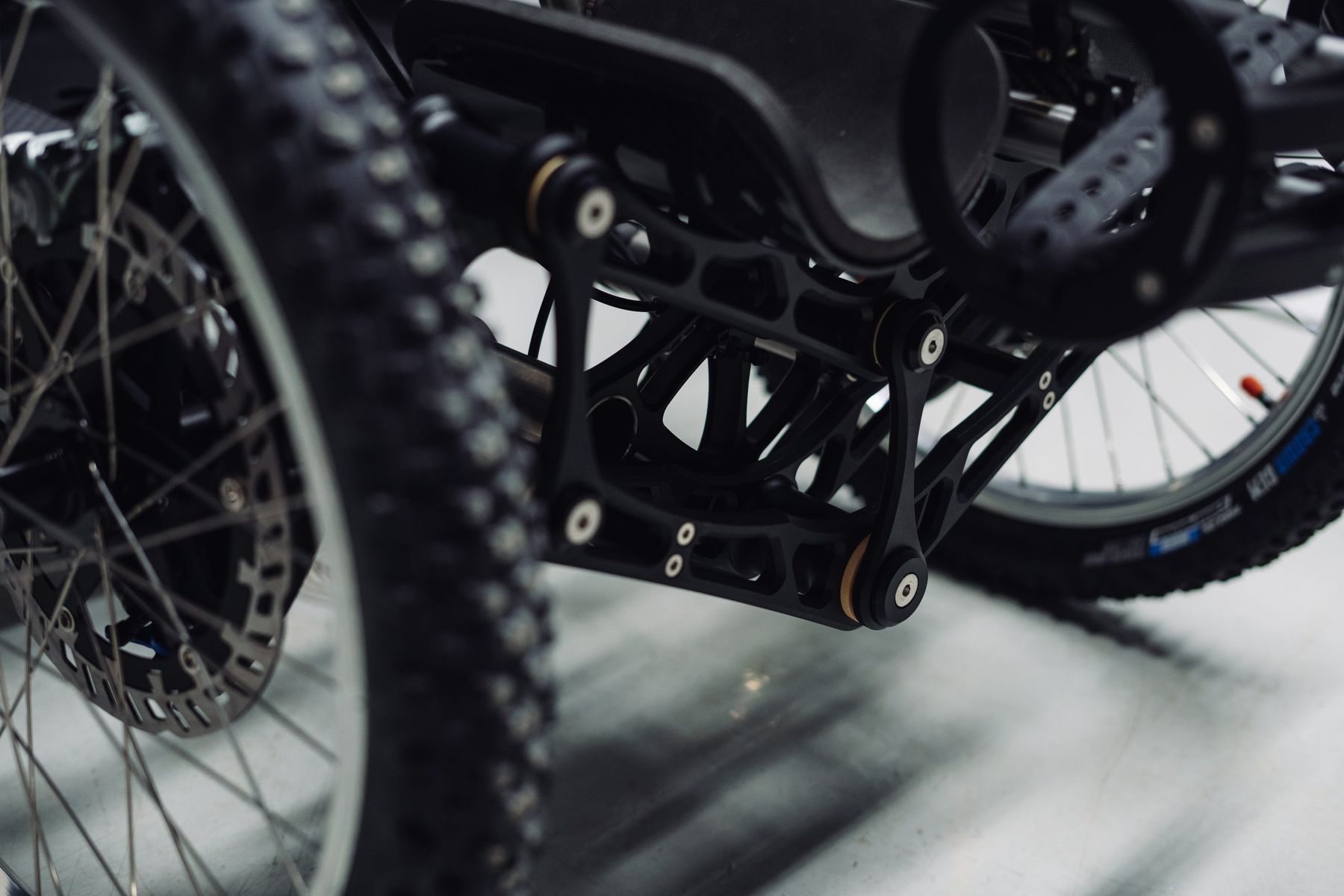
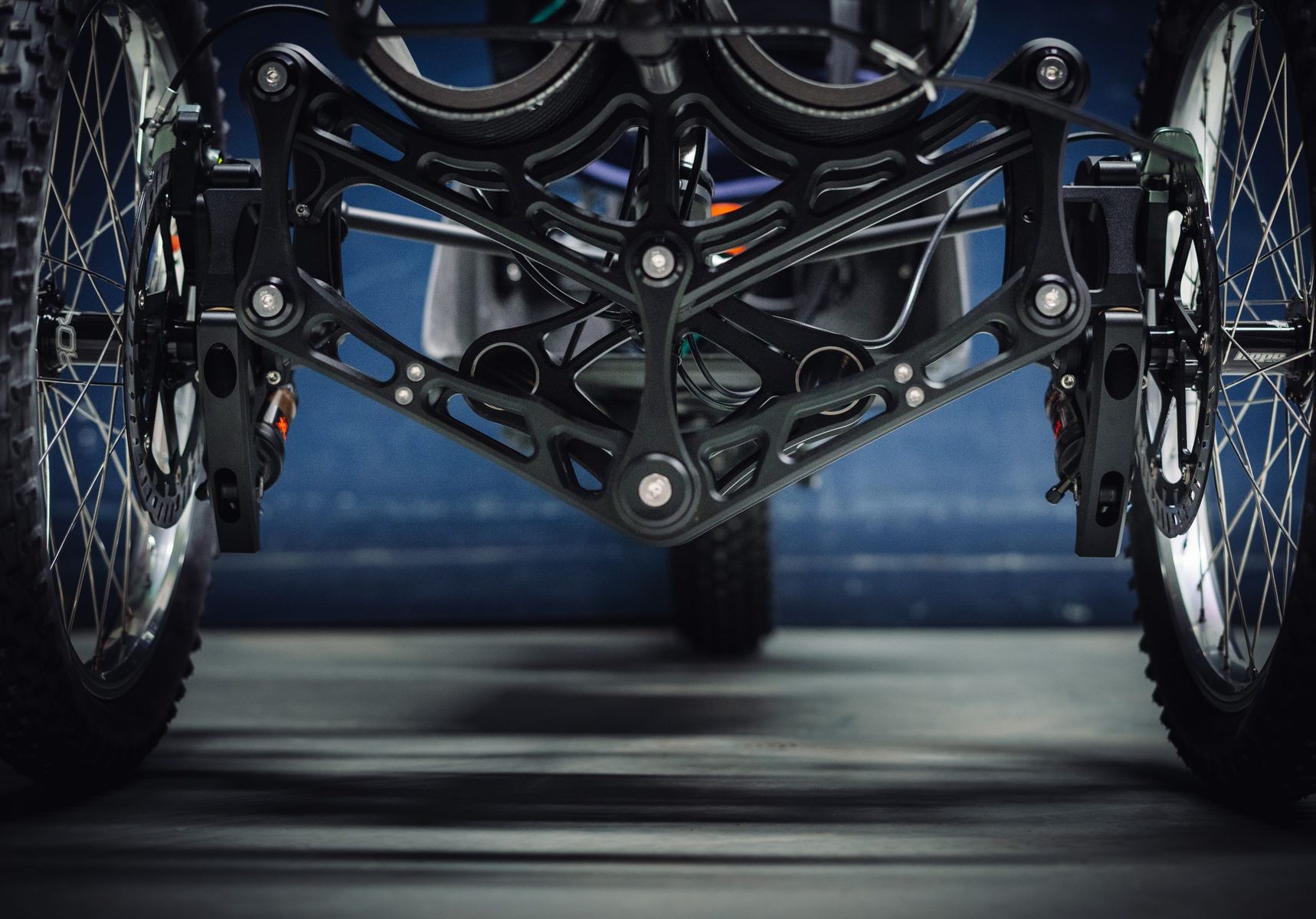

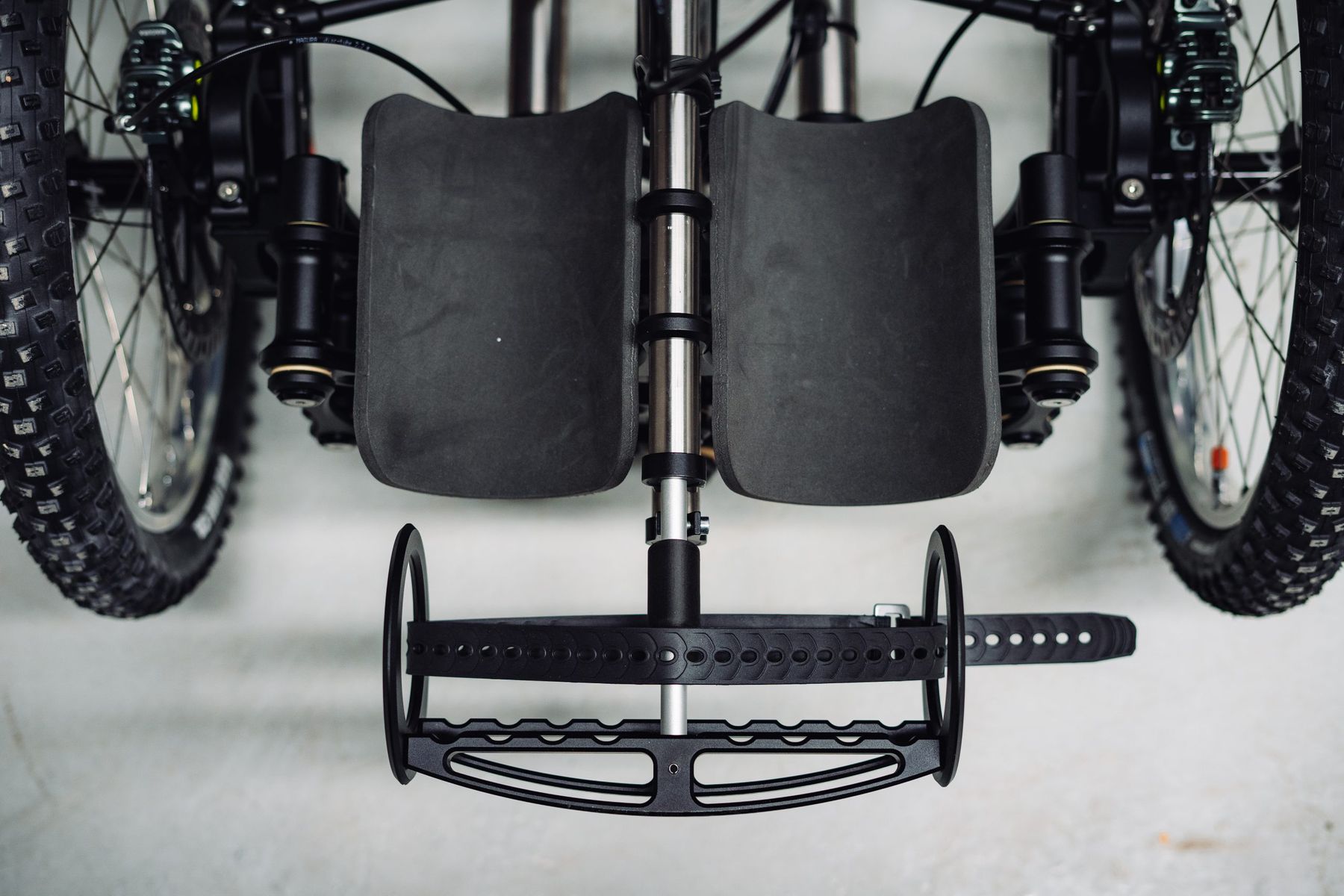
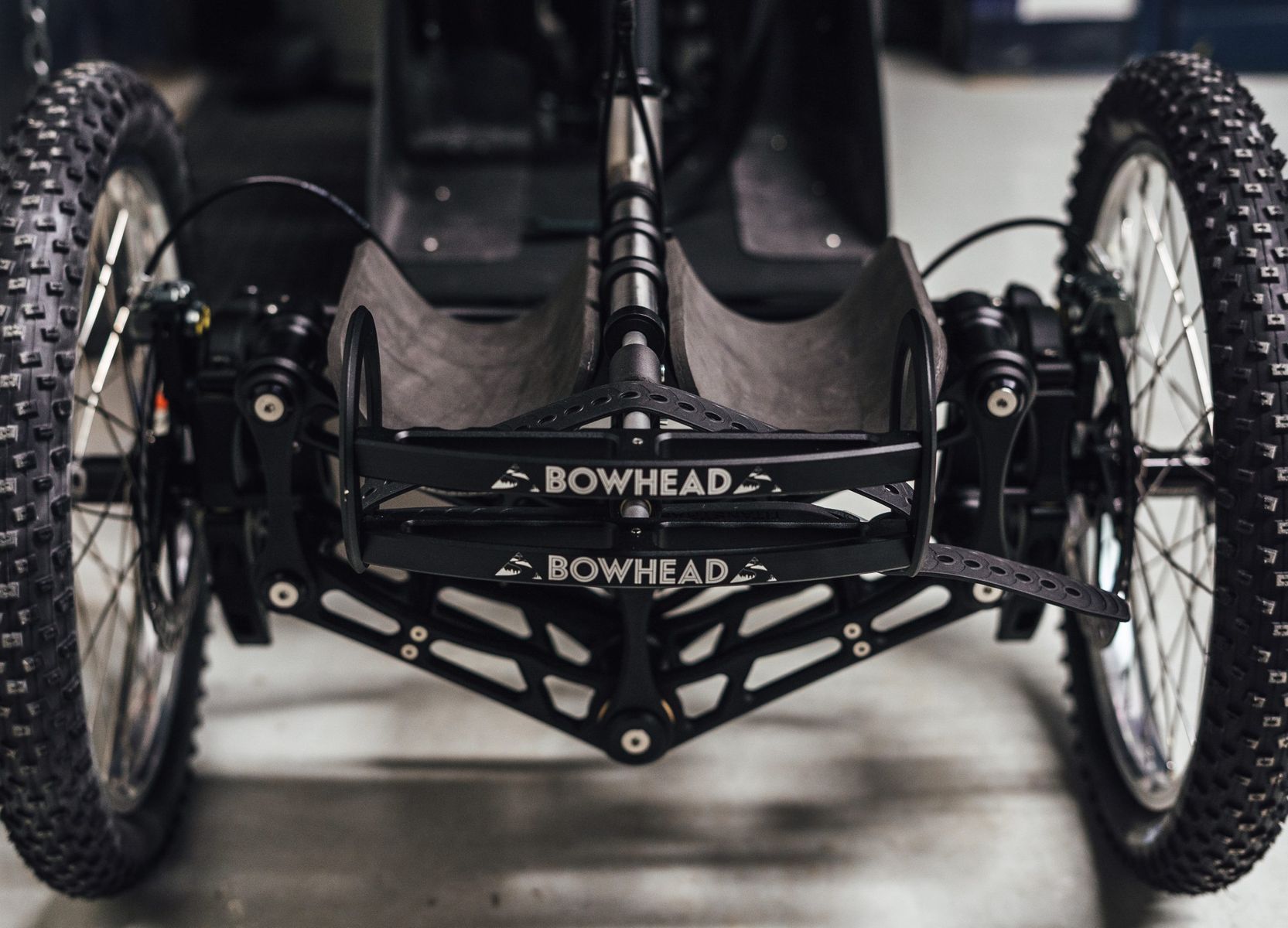
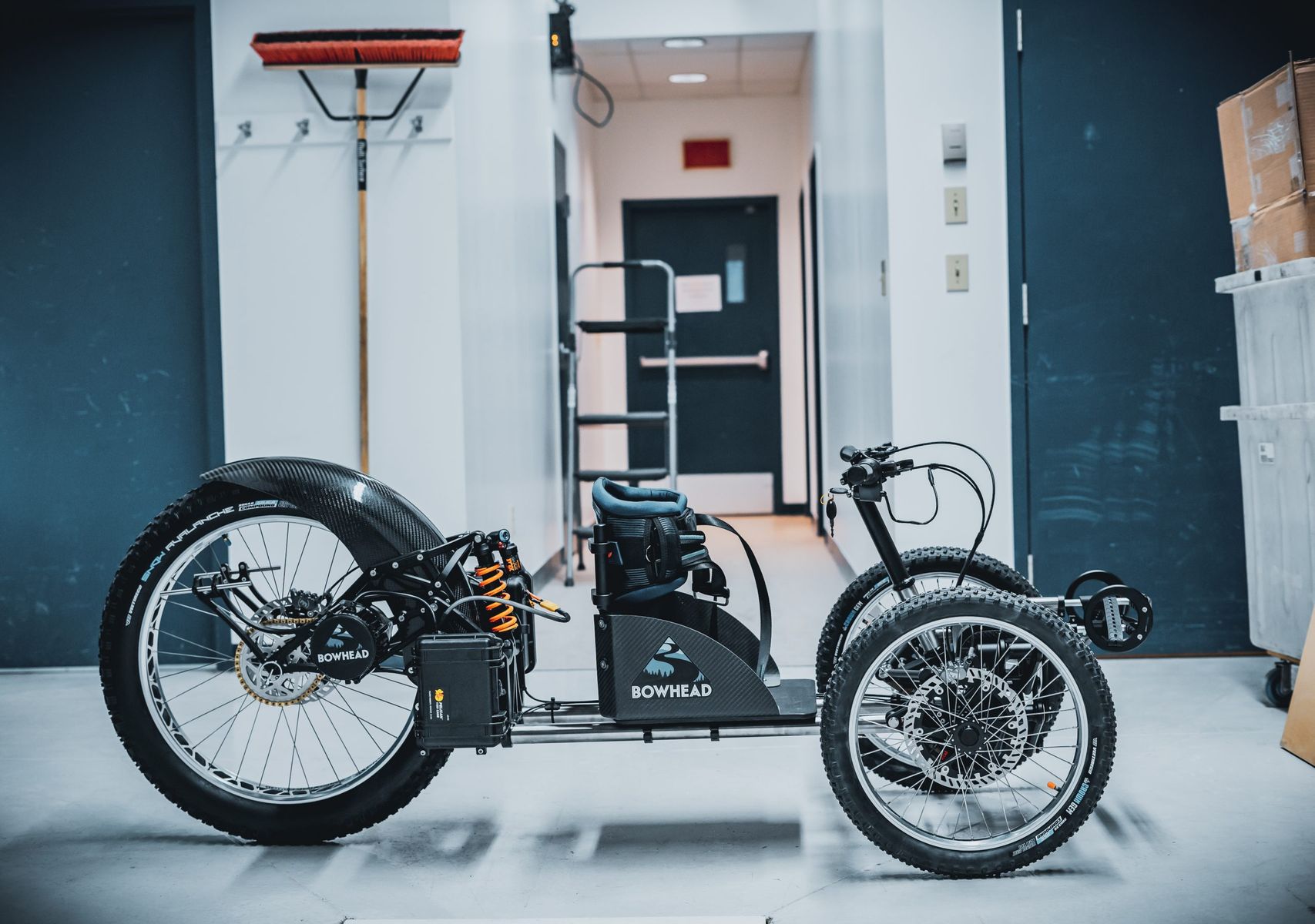
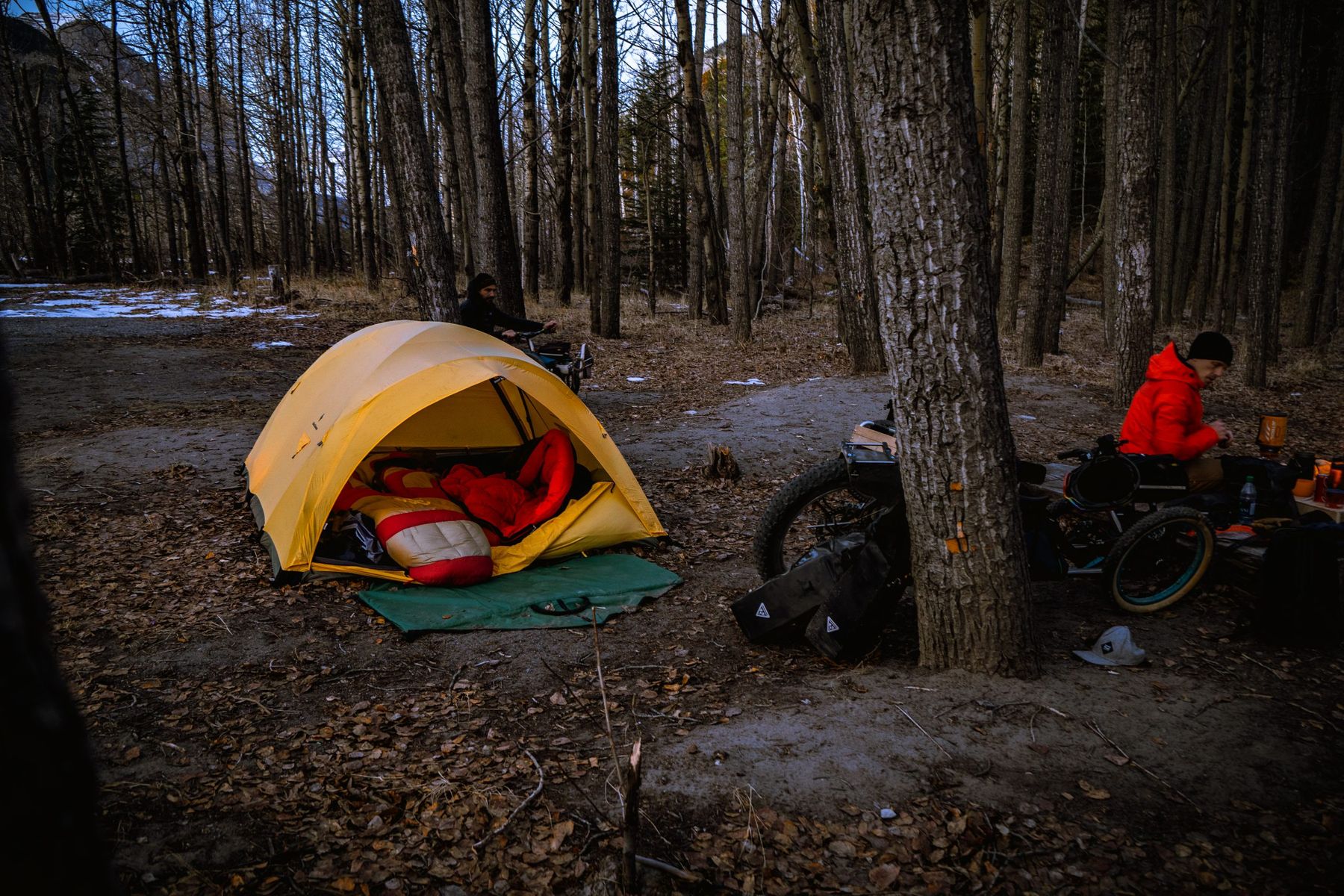
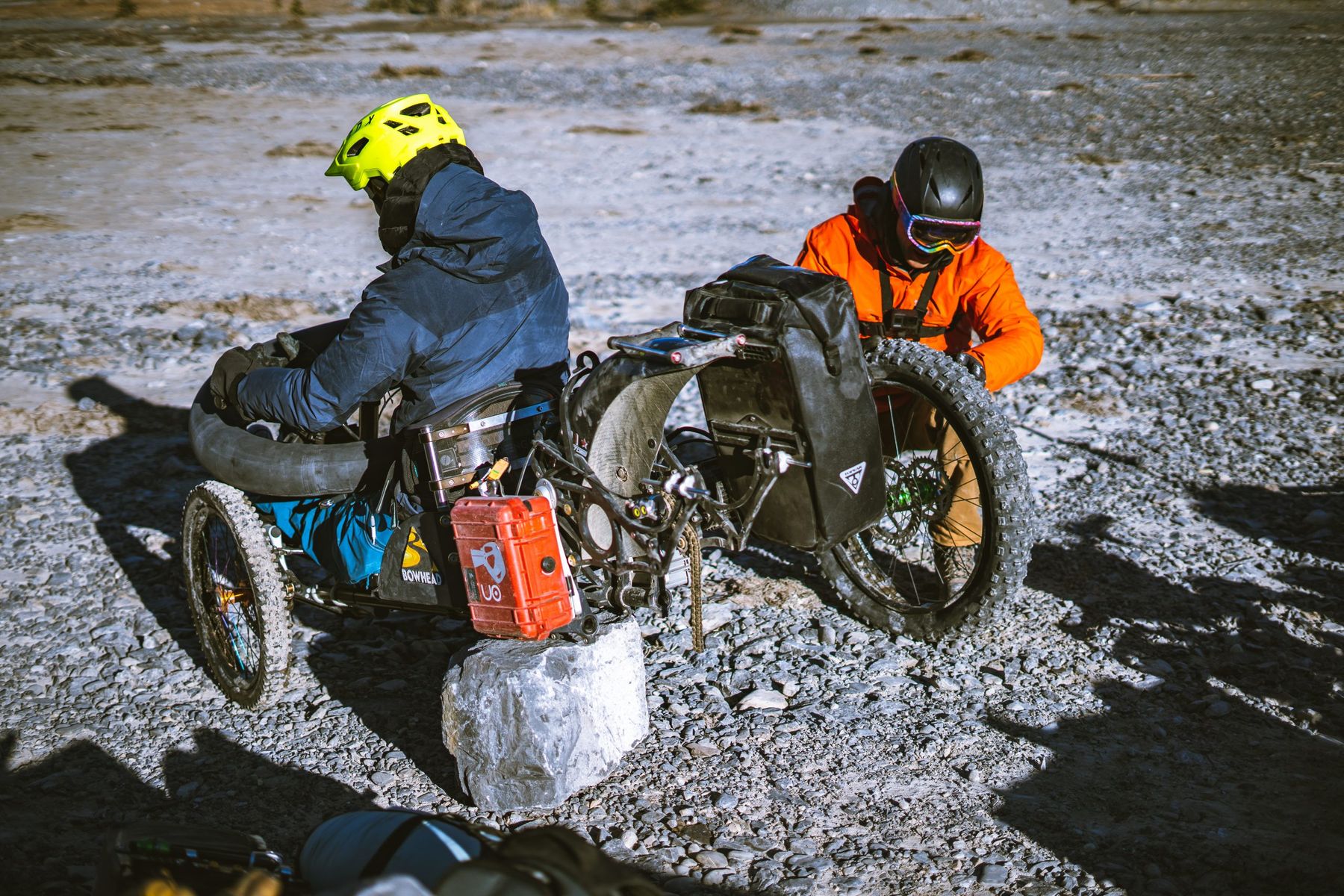
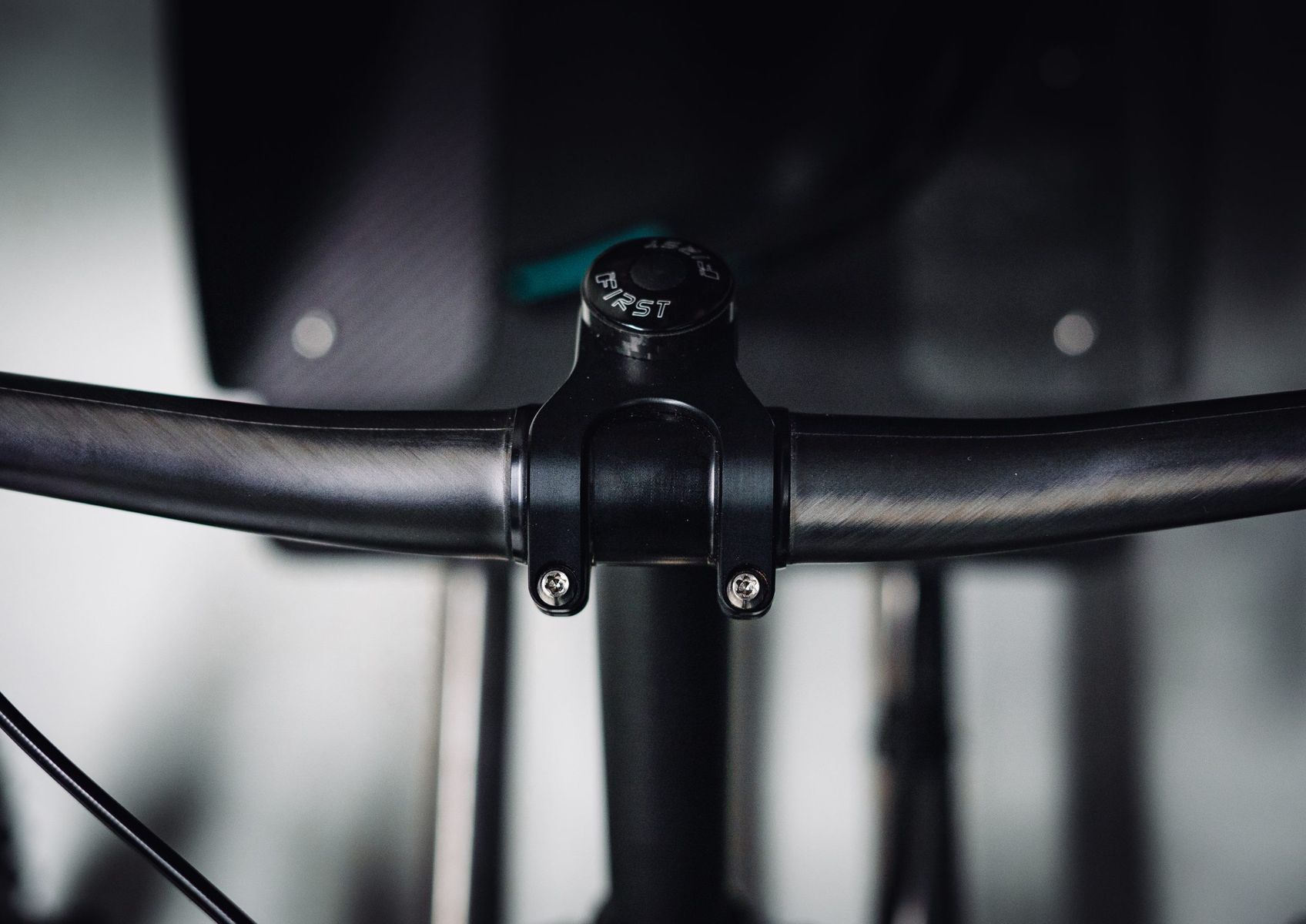
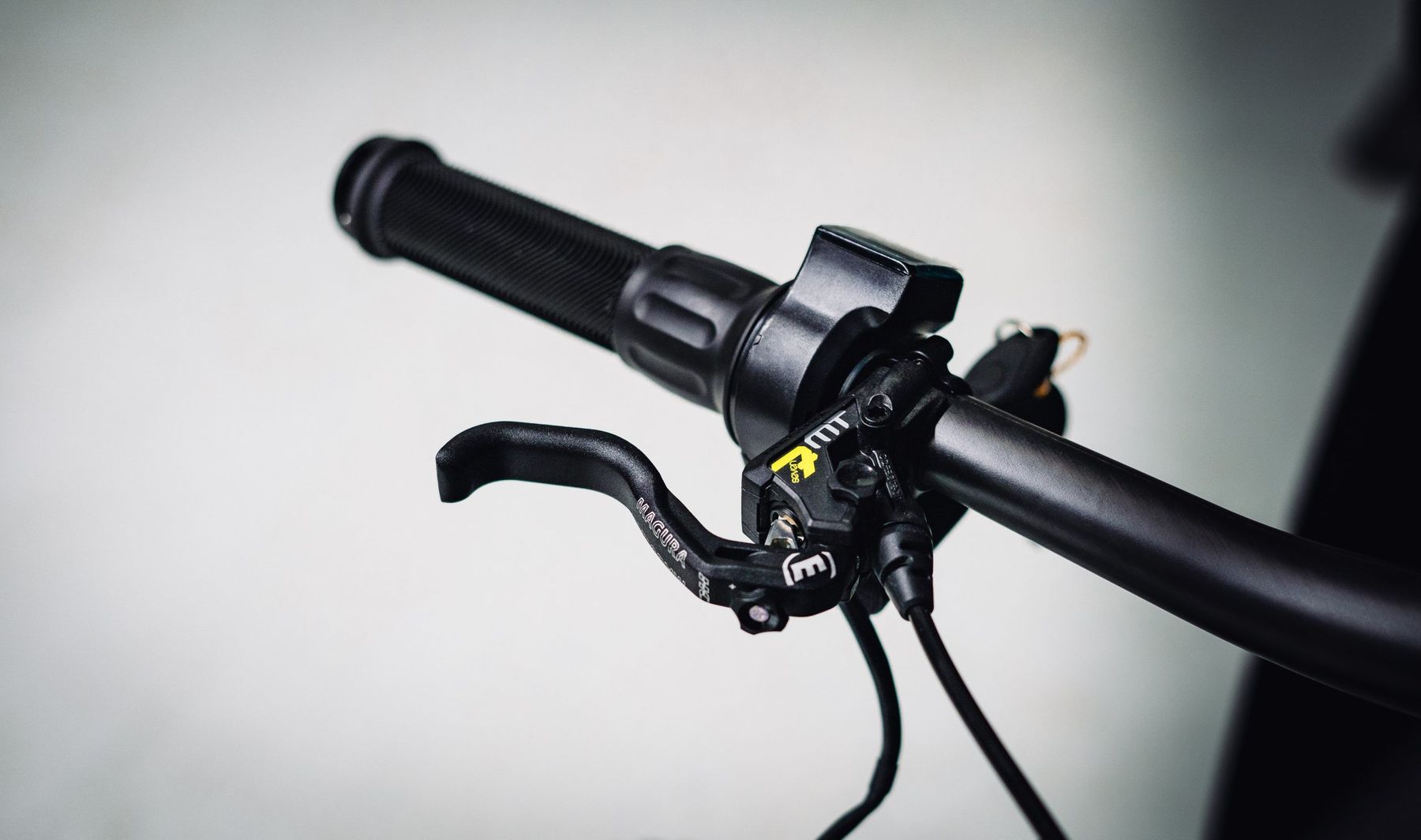
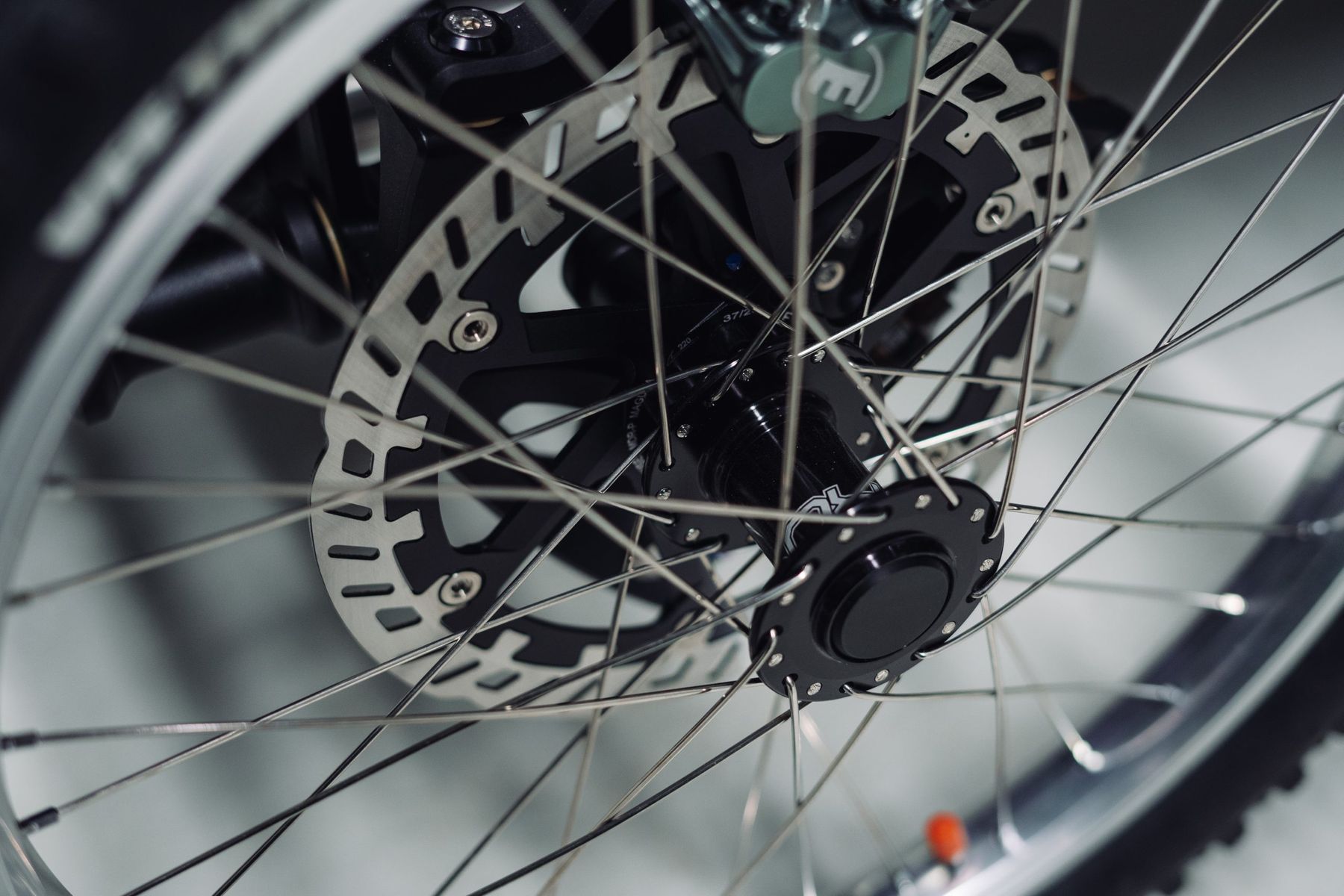
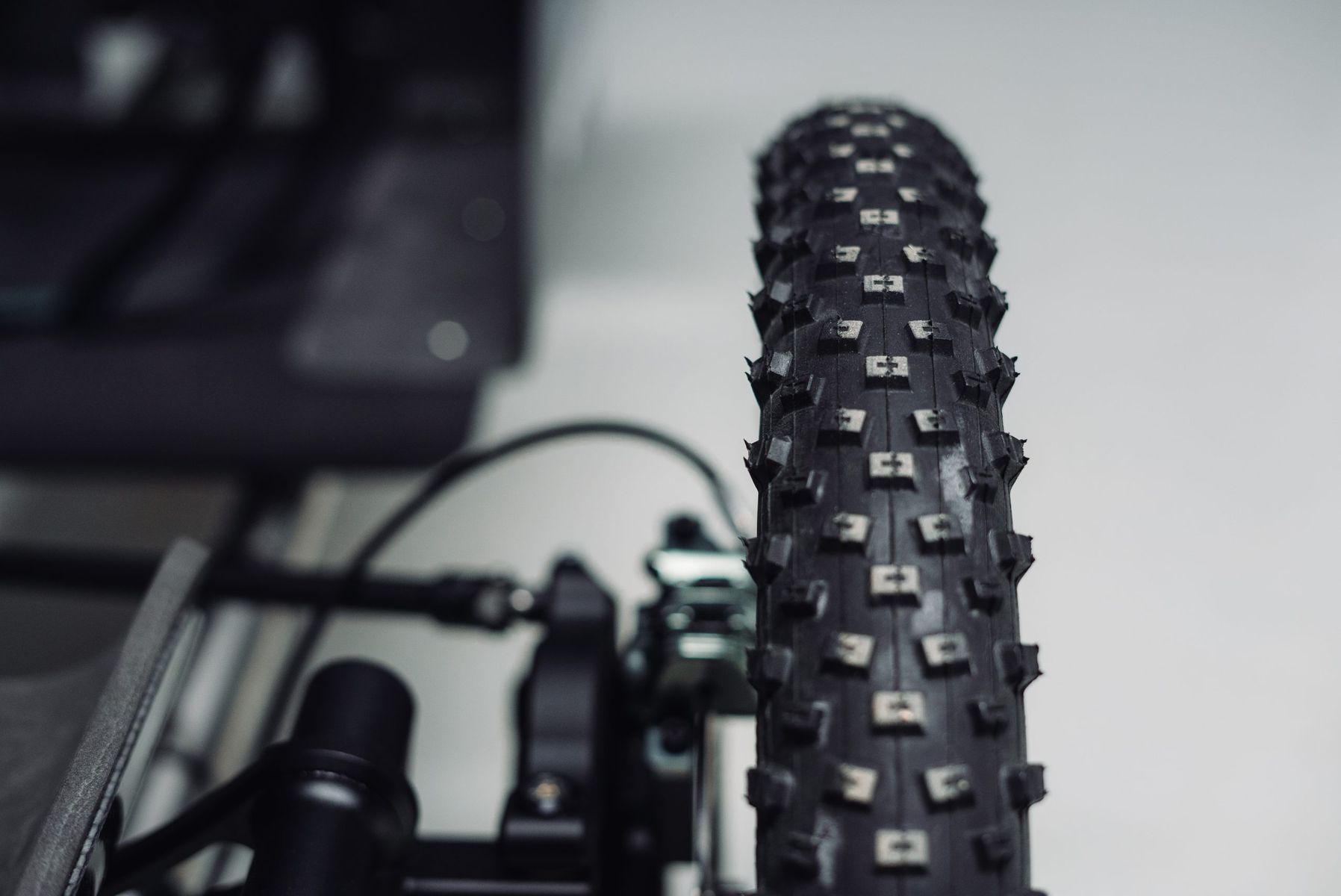
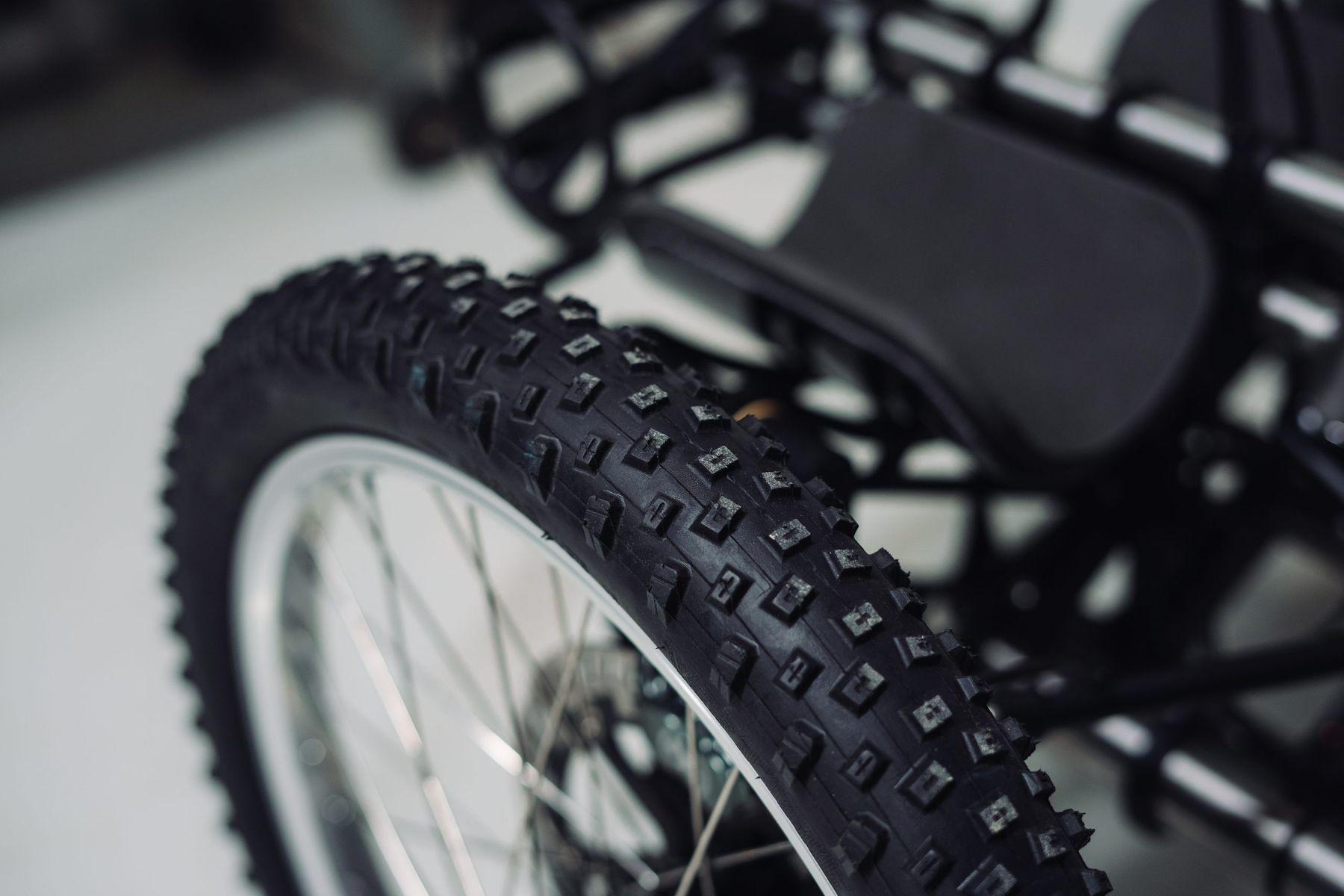
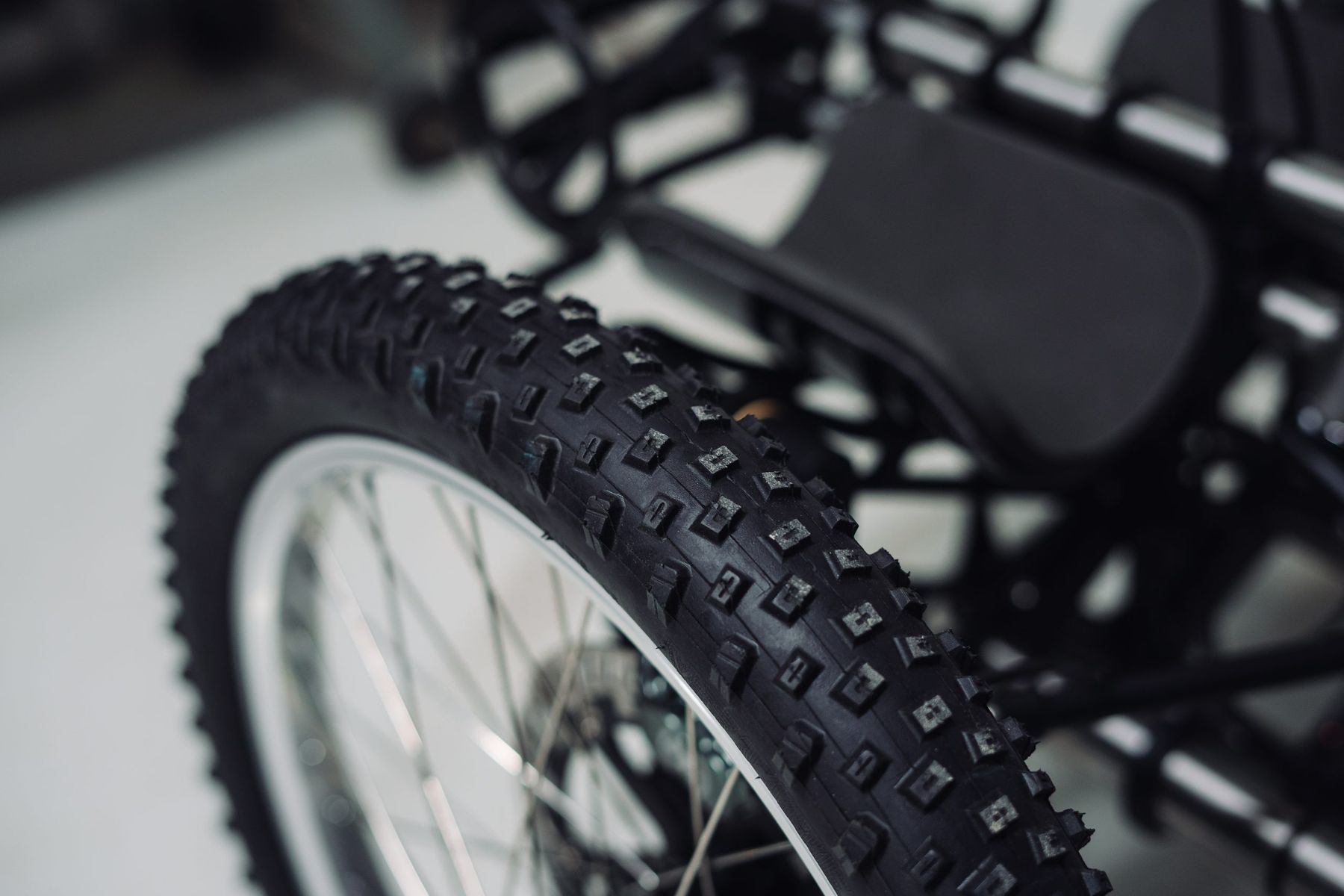
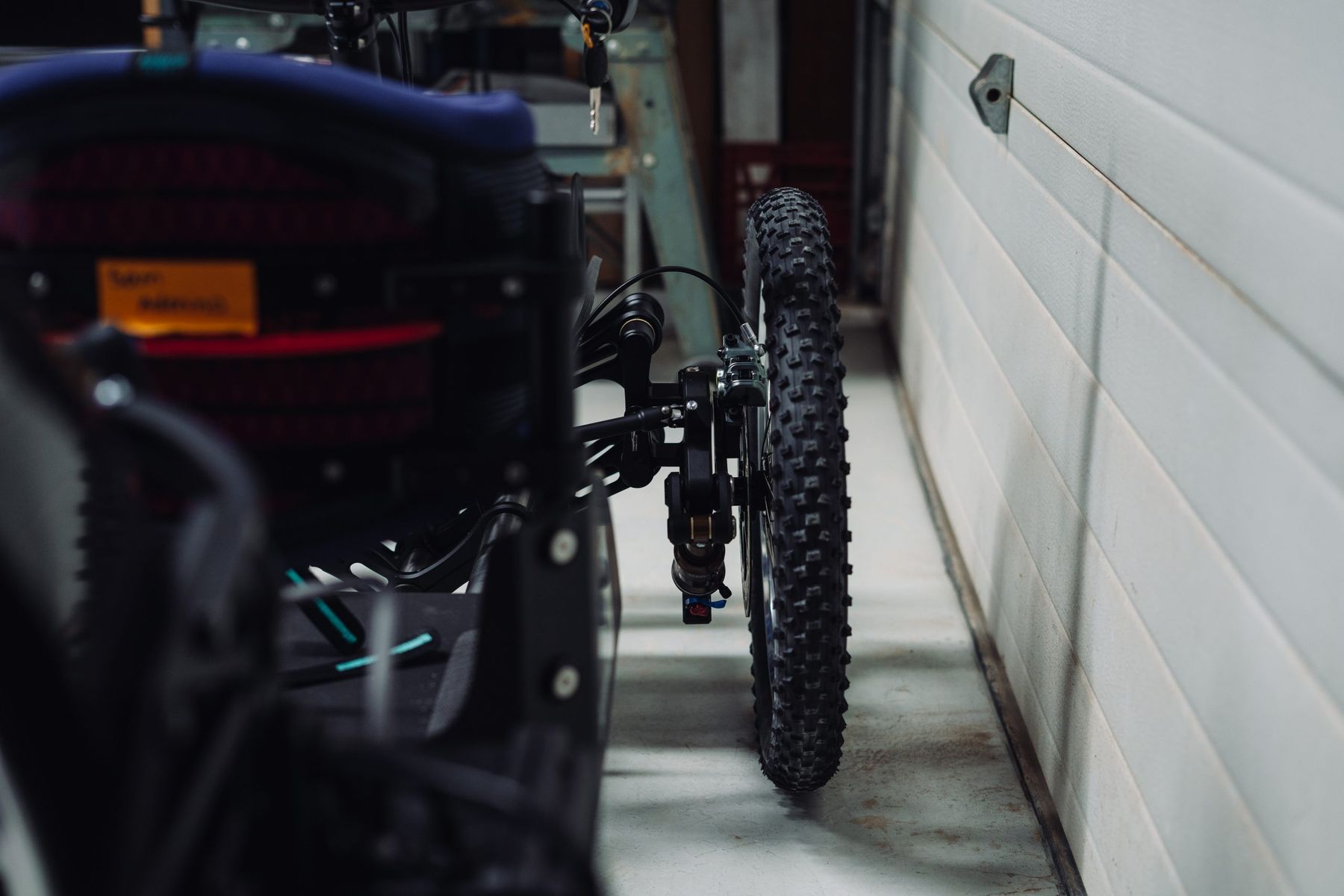
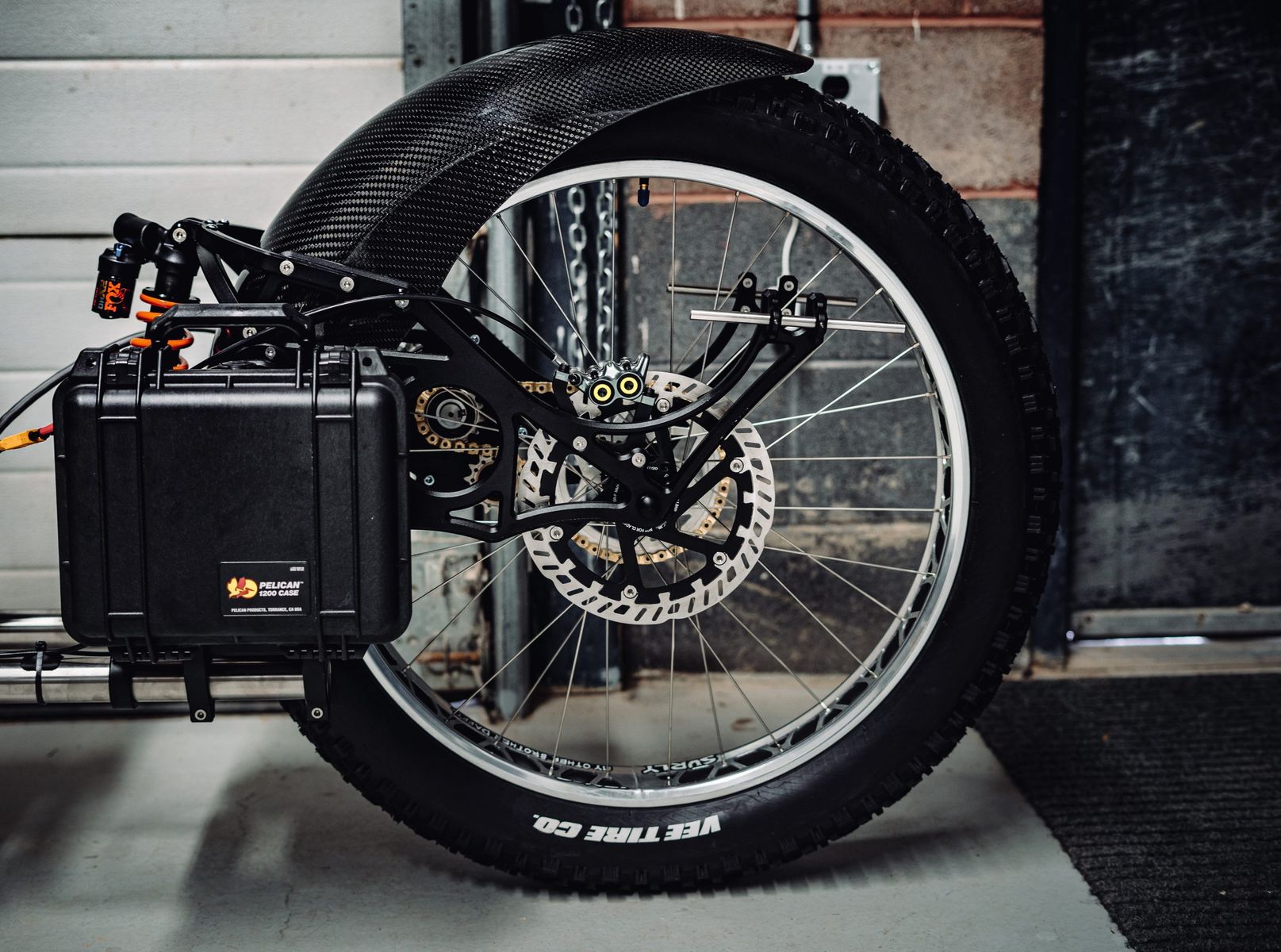
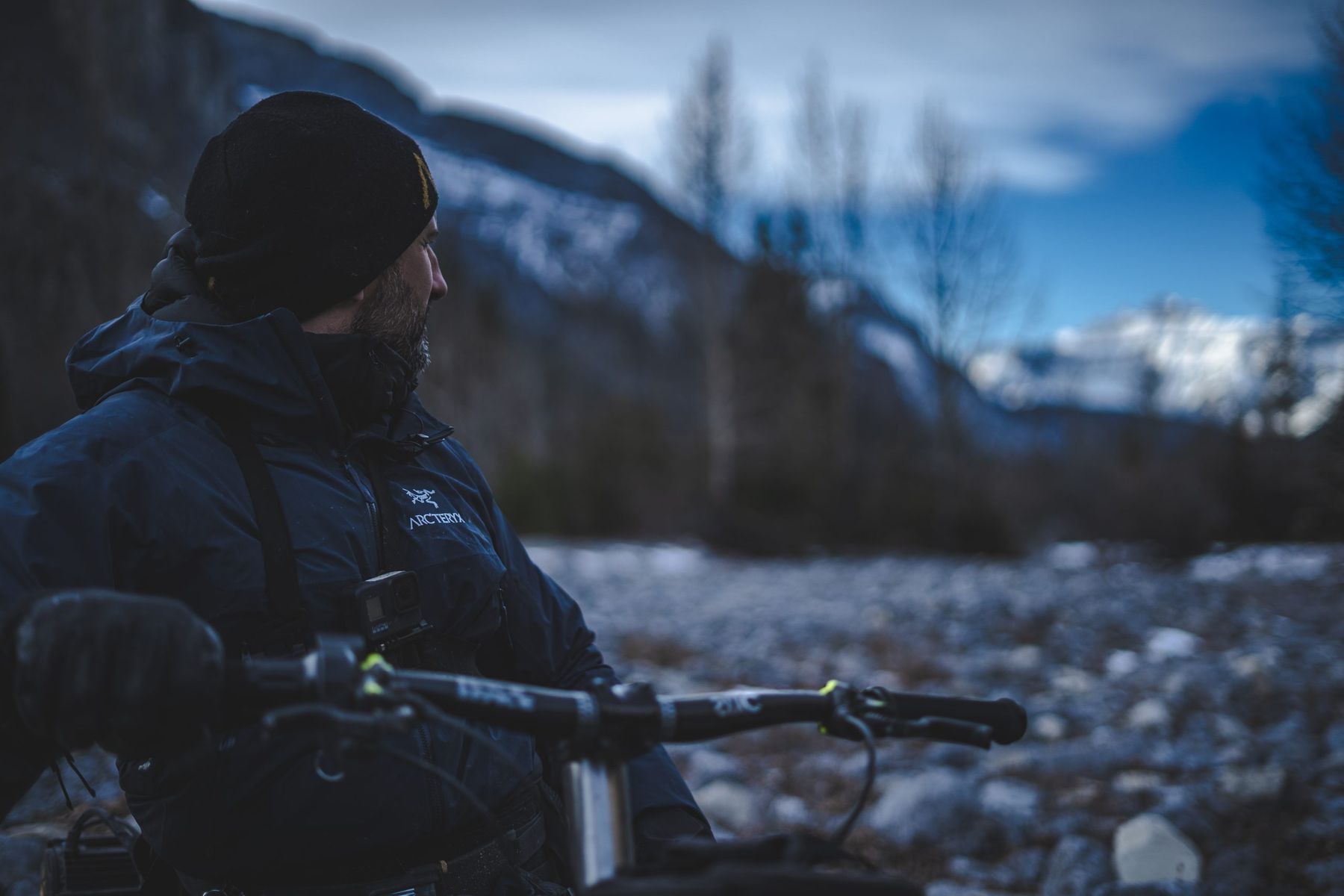
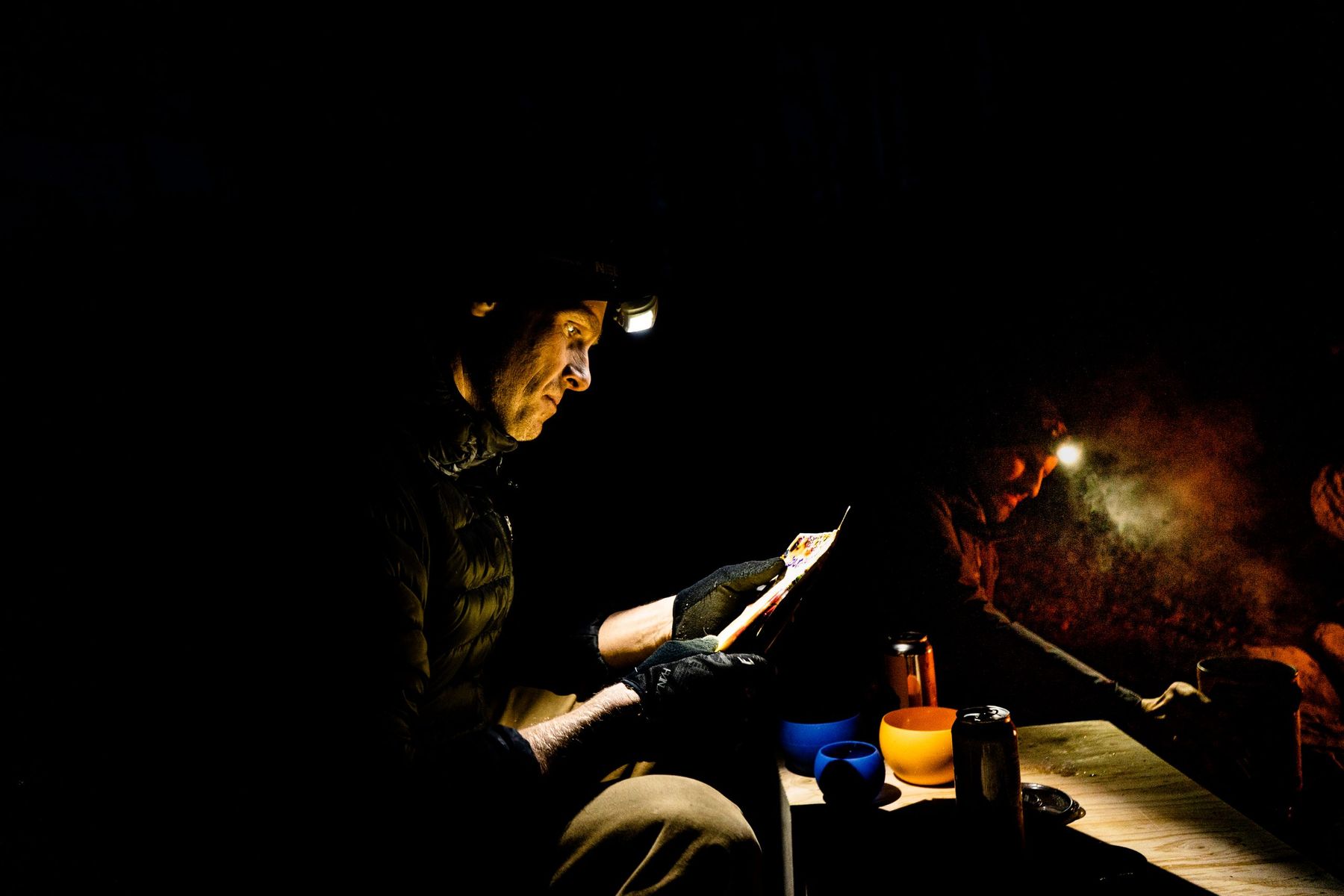
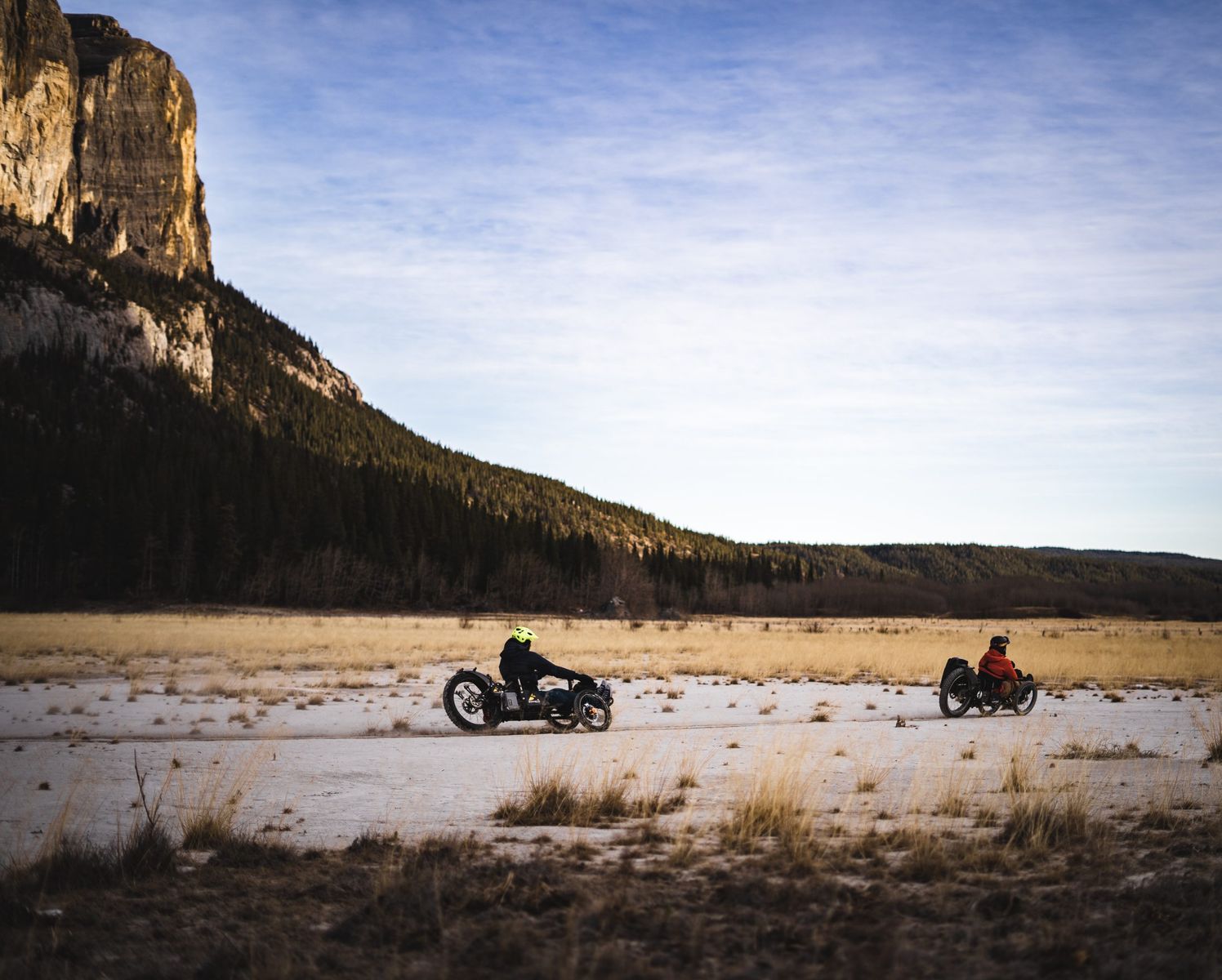
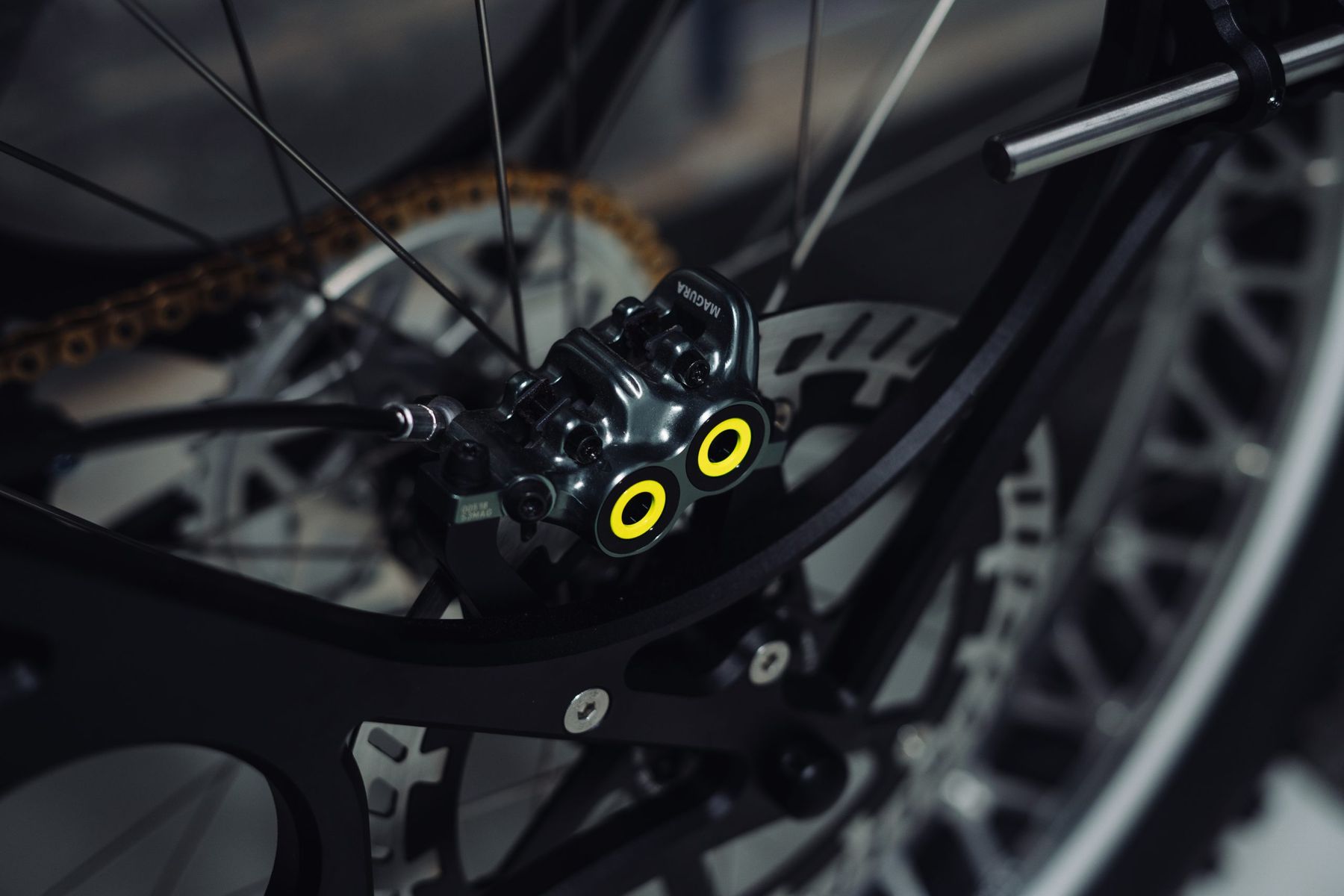
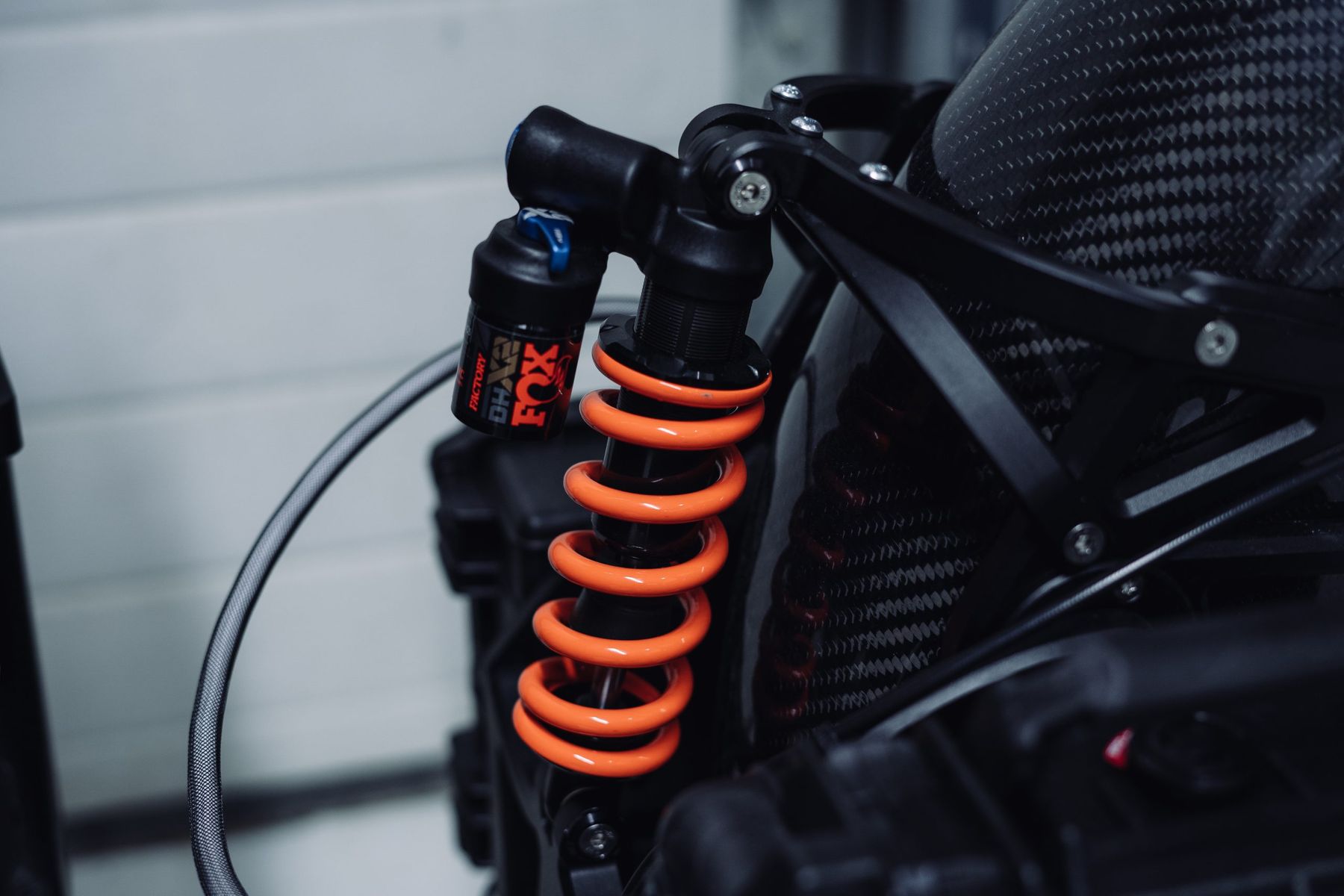
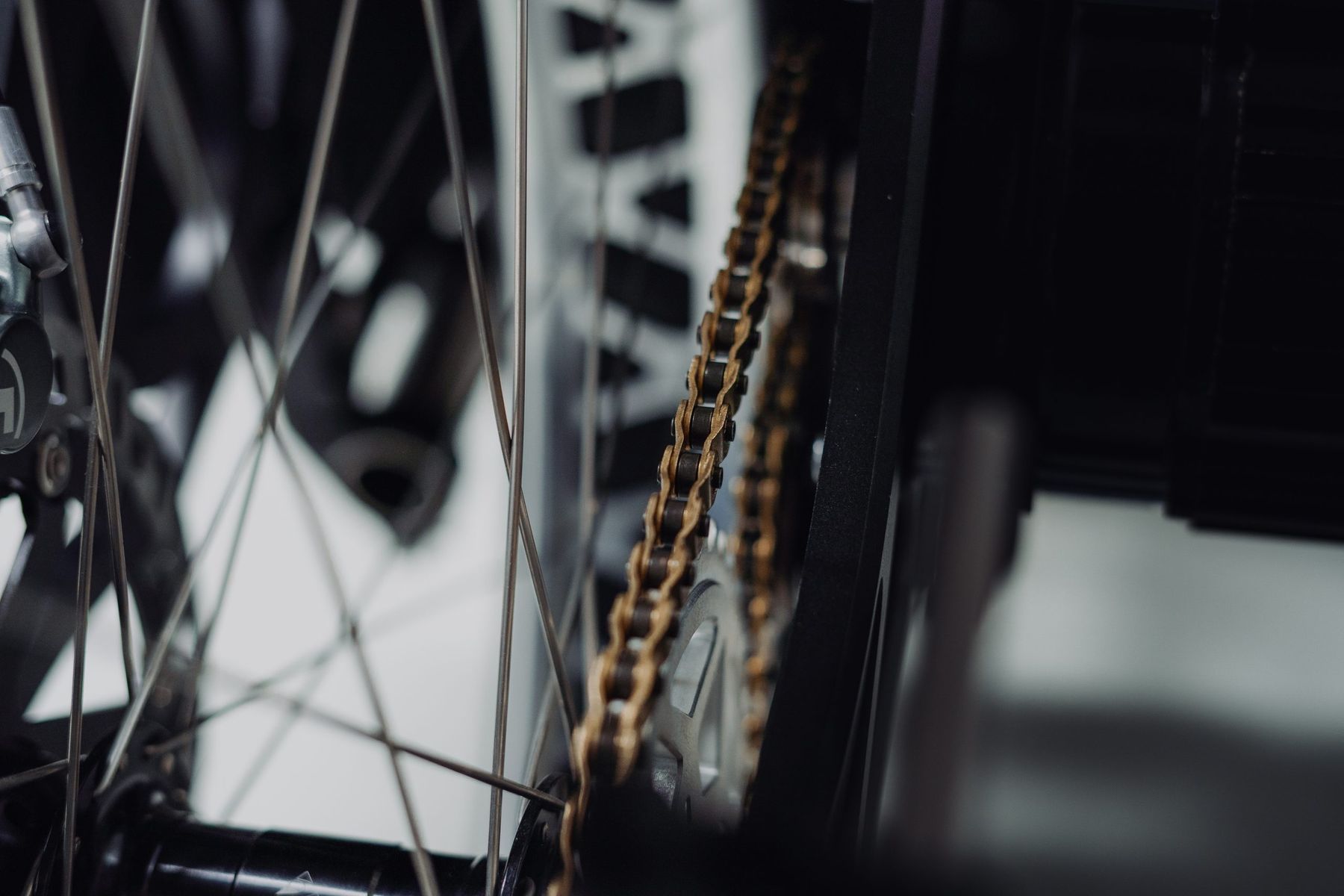
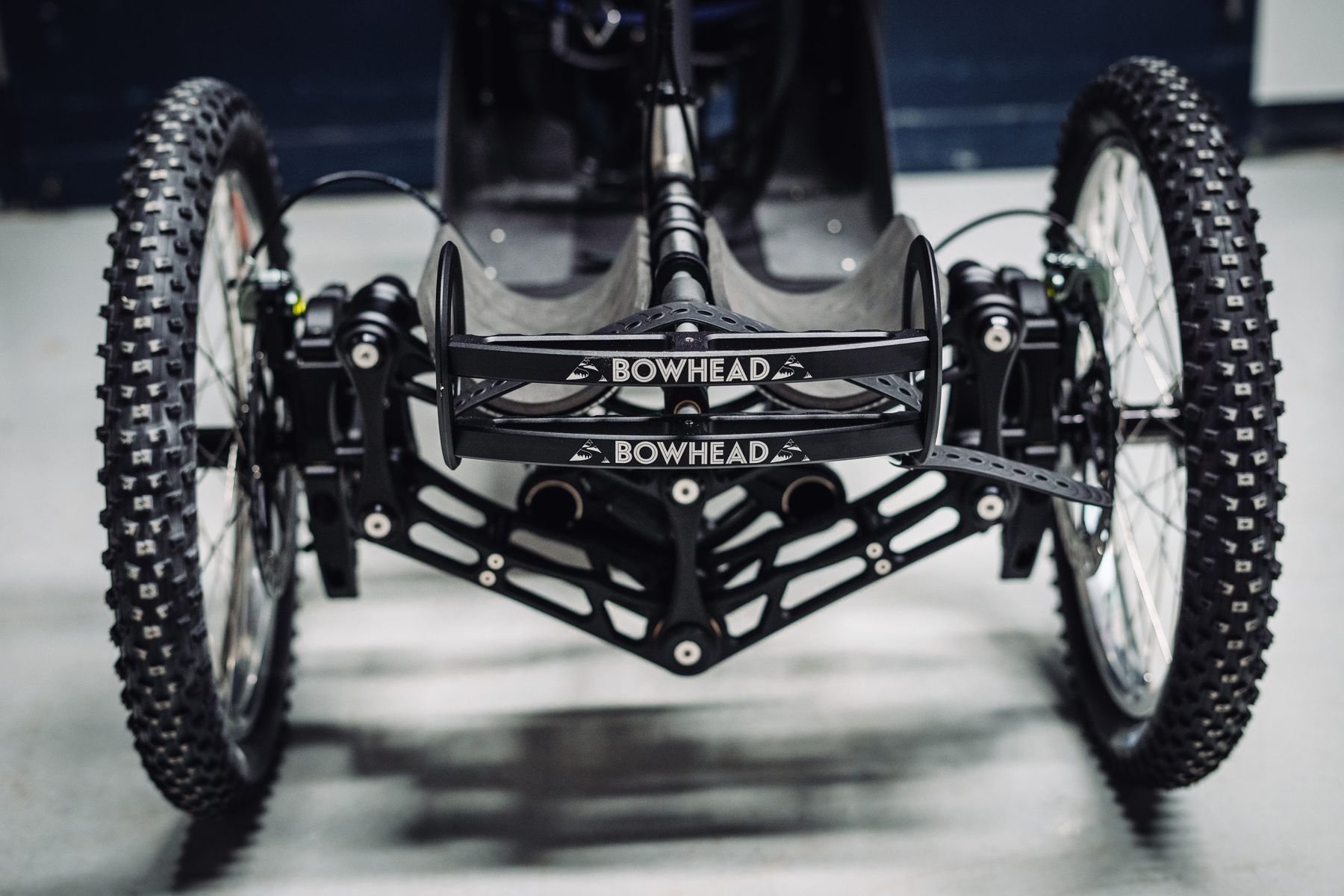

That is just incredible! Great pictures too.
This could be a real game changer for some.
My sister is paraplegic and very active. Having looked at a few things for similar (ish) purposes (well, probably not multi day camping, more just going for a decent off road ride) over the years this one looks so nicely engineered and stable it could be the first that looks to us like a genuine prospect. Kind of more emtb than motorised mobility scooter, even without a pedalling action. Dread to think what it costs though…
Very keen to go for a test ride.
@luket I think it’s about $15,000 – which is a lot, until you look at the price of some recent eMTBs and then it doesn’t seem that much at all for something that’s adjustable and somewhat bespoke!